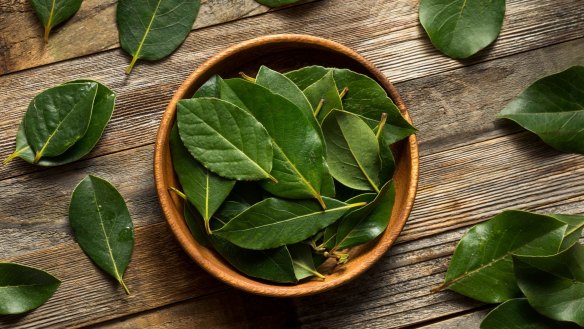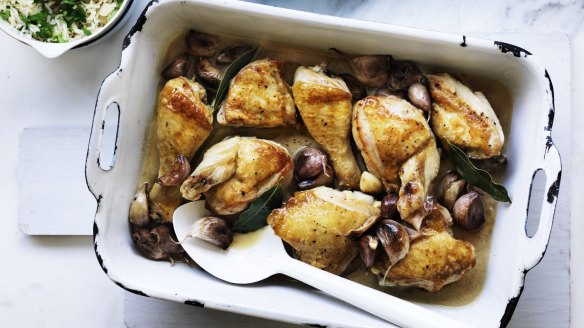Bay leaves: Everything you need to know

What are they?

Native to the Mediterranean basin, bay leaves grow on an evergreen tree, Laurus nobilis, commonly known as bay or bay laurel. When freshly picked, they are deep green, glossy and packed with aromatic compounds that add flavour to foods with which they are cooked. Dried leaves are sold commercially and impart a more subtle flavour. A hallmark note in sweet and savoury dishes from across Europe, bay has been distilled with alcohol for medicinal use for hundreds of years. In ancient Rome, crowns made from bay branches were placed on the heads of leaders as a mark of honour.
Why do we love it?
Bay trees are hardy enough to be used as roadside hedging in Scotland and food gardens in Africa, ensuring the leaves are cheap, bountiful and accessible. Its heady mix of essential oils bring high pine-like notes, spicy scents reminiscent of mace or nutmeg and some deep, dark aromas that meld perfectly with game and aged meats, and add a haunting warm spice flavour to dairy- and egg-based sweets. When added early to a slow-cooked dish, fresh bay leaves add a mellow background flavour, and when added closer to serving they bring a sharper, higher herbal note.
Who uses it?
Coskun Uysal, of Turkish restaurant Tulum in Balaclava, Melbourne, says bay leaf needs oil in which to absorb the essential oils. "I use it in slow-cooked meat dishes with cinnamon and cloves and with time bay loses its individual pungency and melds with all the other spices." Uysal's panna cotta-like yoghurt muhallebi is gently infused with bay leaves before being set, the bay adding deep notes that complement the sourness of the yoghurt. Chef Nik Hill of Porcine in Sydney's Paddington adds bay to meat brines and braises but is well known for his bay vinaigrette. "I whiz up fresh leaves in white wine vinegar, let it stand for a few days, strain, mix with olive oil and pour this over young seasonal veg." He also tosses boiled new-season potatoes with beurre blanc and bay and uses this as a base for an American-style crab boil. While bay leaves should be removed from most dishes before serving, in some households, if a diner accidently receives a leaf on their plate, it is considered good luck.
How do you use it?
Add whole leaves to slow-cooked meat and veg dishes. Older leaves have more oils than the new growth. Cut whole branches and hang upside down in the pantry to deter pantry moths. Trim and whittle small branches to make skewers for kebabs. Place bay leaves between marinated chicken pieces for extra flavour before barbecuing. Add a few leaves to hot butter when starting a pâté or simmer in hot milk when making the custard for a sweet or savoury bread and butter pudding. Roast whole snapper with bay leaves or place chicken pieces in a roasting pan with whole cloves of garlic for Spanish-style chicken. Bay leaves add a lovely deep note to sweet fruit dishes such as pear, bay leaf and roasted fennel crumble and in olive oil and lemon cakes.
Where do you get it?
Greengrocers, supermarkets and farmers' markets. If you don't have one in the garden, do yourself a favour and buy a bay tree to plant in the garden or a big pot, or scope out a neighbour with a tree growing near their front fence.
Suggest an ingredient via email to brainfood@richardcornish.com.au or tweet to @foodcornish.
Appears in these collections
- More:
- Food
- Brain food
